Either you should declare the third array like
int A[5][5];
int B[5][5];
int ( *C[] )[N][N] = { &A, &B };
that is as an array of pointers to two-dimensional arrays.
For example
#include <stdio.h>
#define N 5
void output( int ( *a )[N][N] )
{
for ( size_t i = 0; i < N; i++ )
{
for ( size_t j = 0; j < N; j++ ) printf( "%2d ", ( *a )[i][j] );
printf( "\n" );
}
}
int main( void )
{
int A[N][N] =
{
{ 1, 2, 3, 4, 5 },
{ 6, 7, 8, 9, 10 },
{ 11, 12, 13, 14, 15 },
{ 16, 17, 18, 19, 20 },
{ 21, 22, 23, 24, 25 }
};
int B[N][N] =
{
{ 25, 24, 23, 22, 21 },
{ 20, 19, 18, 17, 16 },
{ 15, 14, 13, 12, 11 },
{ 10, 9, 8, 7, 6 },
{ 5, 4, 3, 2, 1 }
};
/*
typedef int ( *T )[N][N];
T C[] = { &A, &B };
*/
int ( *C[] )[N][N] = { &A, &B };
output( C[0] );
printf( "\n" );
output( C[1] );
printf( "\n" );
}
The program output is
1 2 3 4 5
6 7 8 9 10
11 12 13 14 15
16 17 18 19 20
21 22 23 24 25
25 24 23 22 21
20 19 18 17 16
15 14 13 12 11
10 9 8 7 6
5 4 3 2 1
or like
int A[5][5];
int B[5][5];
int ( *C[] )[N] = { A, B };
that is as an array of pointers to the first elements of two-dimensional arrays.
For example
#include <stdio.h>
#define N 5
void output( int ( *a )[N] )
{
for ( size_t i = 0; i < N; i++ )
{
for ( size_t j = 0; j < N; j++ ) printf( "%2d ", a[i][j] );
printf( "\n" );
}
}
int main( void )
{
int A[N][N] =
{
{ 1, 2, 3, 4, 5 },
{ 6, 7, 8, 9, 10 },
{ 11, 12, 13, 14, 15 },
{ 16, 17, 18, 19, 20 },
{ 21, 22, 23, 24, 25 }
};
int B[N][N] =
{
{ 25, 24, 23, 22, 21 },
{ 20, 19, 18, 17, 16 },
{ 15, 14, 13, 12, 11 },
{ 10, 9, 8, 7, 6 },
{ 5, 4, 3, 2, 1 }
};
/*
typedef int ( *T )[N];
T C[] = { A, B };
*/
int ( *C[] )[N] = { A, B };
output( C[0] );
printf( "\n" );
output( C[1] );
printf( "\n" );
}
The program output is the same as above
1 2 3 4 5
6 7 8 9 10
11 12 13 14 15
16 17 18 19 20
21 22 23 24 25
25 24 23 22 21
20 19 18 17 16
15 14 13 12 11
10 9 8 7 6
5 4 3 2 1
depending on how you are going to use the third array.
Using typedefs (shown in the demonstrative program as commented) ssimplifies the arrays' definitions.
As for this declaration
int*** C = {&A, &B};
then in the left side there is declared a pointer of type int *** that is a scalar object while in the right side there is a list of initializers that have different type int ( * )[N][N].
So the compiler issues a message.
